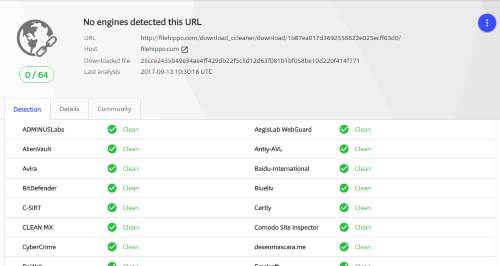In today’s world, where digital content is king, it’s crucial to be able to check and verify files before downloading them. This can save you from downloading malware, virus-infected files, or any other type of corrupted data that can harm your computer or mobile device. Luckily, there are different ways to check files before downloading them. In this article, we will cover some of the easiest and most effective ways to verify files before downloading them, regardless of the type of device you’re using.
Cara-Cek-File-Sebelum-Kamu-Download-2
One of the best and easiest ways to check files before downloading them is to use an online antivirus scanner. There are different antivirus tools available online for free that can help you scan your files before even downloading them. One such tool is VirusTotal. This online tool allows you to upload any file you want to scan and get a detailed report on the file’s safety. VirusTotal checks your file against multiple antivirus engines and other security tools to ensure that it is safe to download.
Another way to verify files before downloading them is to check their metadata. Every file has a set of metadata that contains information about the file, such as its creation date, size, and more. By checking a file’s metadata, you can ensure that it is not malicious or infected with a virus. There are different tools you can use to view a file’s metadata, such as Exiftool for images and TagScanner for music files.
Cara-Cek-File-Sebelum-Kamu-Download-1
Another useful way to verify files before downloading them is to use an MD5 hash. An MD5 hash is a unique code that is generated based on the contents of a file. By checking the MD5 hash of a file, you can ensure that it is the same file that you intend to download. There are different tools you can use to generate and check the MD5 hash of a file, such as HashMyFiles and HashCheck Shell Extension for Windows, and md5sum for Linux and Unix systems.
If you’re downloading files from a website, it’s also essential to check the website’s security. One way to do this is to check the website’s SSL certificate. An SSL certificate can help you ensure that the website you’re visiting is legitimate and secure. To check a website’s SSL certificate, look for a padlock icon next to the website’s URL in the address bar. You can also click on the padlock icon to view the website’s SSL certificate information.
Cara Cek dan Menghapus File Duplikat / File Ganda Di Android
It’s essential to check files before downloading them, especially on mobile devices like Android phones. One of the most common issues with Android devices is that they can store multiple duplicates of the same file, which can take up valuable storage space. To check for and delete duplicate files, you can use an app like Duplicate Files Fixer. This app scans your device for duplicate files and gives you the option to delete them all at once or individually.
In addition to checking files, it’s also essential to protect your device from any malicious files or apps. One way to do this is to install and use a reliable antivirus app on your Android device. There are many antivirus apps available for Android devices, such as Avast Mobile Security & Antivirus, Bitdefender Mobile Security, and Malwarebytes Security. These apps protect your device from malware, viruses, and other security threats.
cara cek file pdf
Adobe PDF files are widely used for sharing information and documents, but they can also be a target for cyber-attacks. Hackers can hide malware or other malicious codes in PDF files, posing a threat to your computer’s security. One way to check the safety of a PDF file is to use a free online PDF scanner tool like Any.Run. Any.Run allows you to upload a PDF file and scan it for any malware or potential security threats.
Another way to protect yourself when downloading PDF files is to use a PDF viewer that has built-in security features. Adobe Acrobat Reader DC is one such PDF viewer that has strong security features. It includes a sandboxing feature that isolates the PDF file from the rest of your device, preventing any malicious code from infecting your computer or mobile device.
FAQ – Frequently Asked Questions
Q: How can I protect my computer from malware?
A: One of the best ways to protect your computer from malware is to install and use a reliable antivirus software. Antivirus software protects your computer from malicious code, virus attacks, and other threats. It can also scan your files and emails for any potential risks and block malicious websites or downloads. You should also keep your operating system and other software updated to the latest versions, avoid clicking on suspicious links or emails, and use strong passwords to protect your accounts.
Q: What should I do if I accidentally download a malicious file?
A: If you accidentally download a malicious file, you should disconnect from the internet immediately and run a full virus scan on your computer. If your antivirus software detects any threats, follow its instructions to remove them. You may also need to uninstall any suspicious programs or applications from your computer. If you’re unsure how to remove the malware or if the problem persists, seek help from a professional or contact your antivirus provider’s customer support.
Conclusion
In conclusion, it’s important to verify files before downloading them to protect your computer or mobile device from potential security threats. There are different ways to check files, such as using an online antivirus scanner, checking the metadata and MD5 hash, and verifying the website’s security. It’s also essential to protect your device from malicious files and apps by using a reliable antivirus app and keeping your software updated. By following these tips, you can ensure that you download only safe and secure files from the internet.



